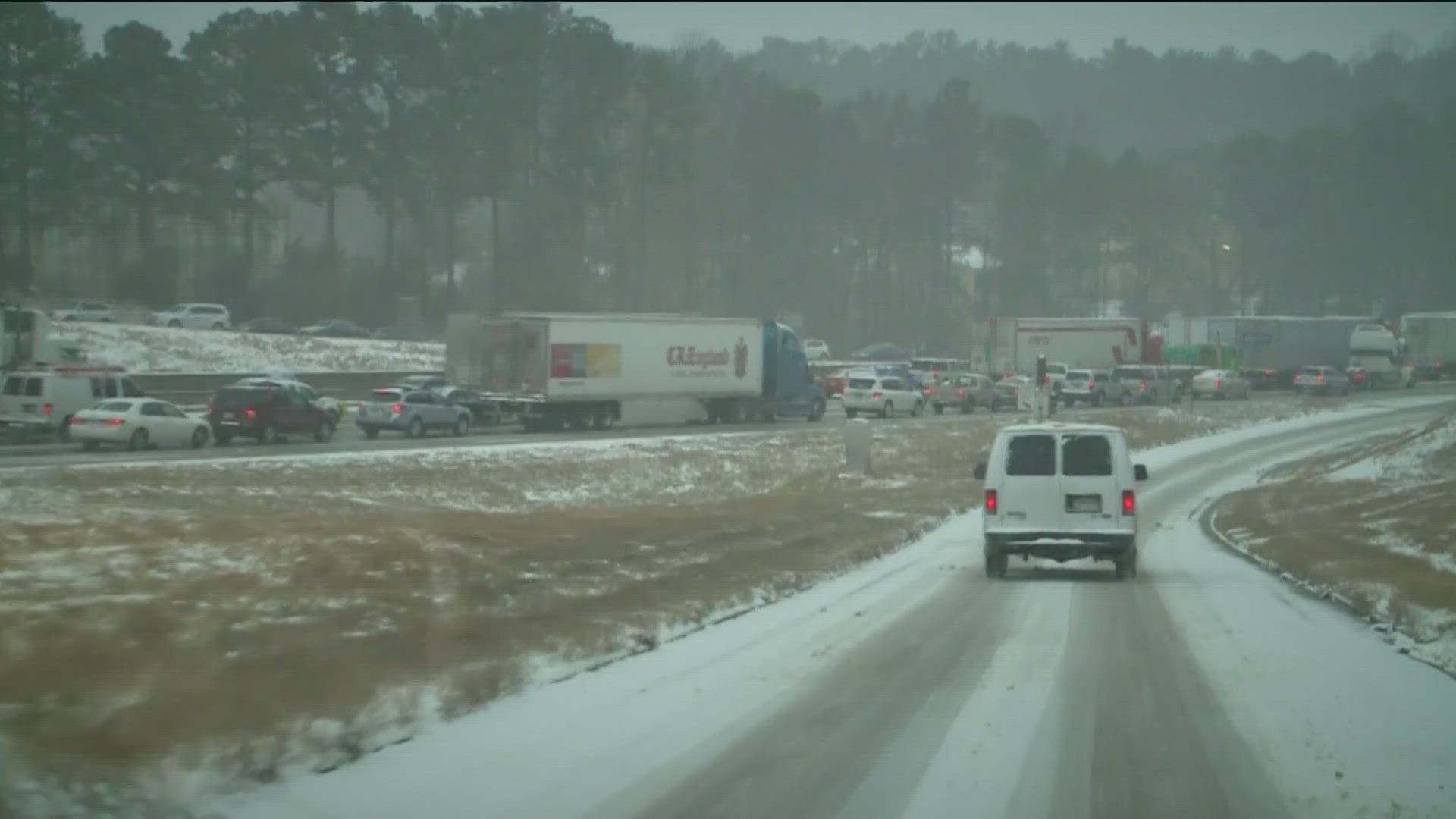ATLANTA —
Ten years ago this Sunday, the City of Atlanta shut down in an event that is now known synonymously to Georgians as "Snow Jam."
11Alive meteorologist Chesley McNeil said it best: "From a forecasting standpoint, everything was predicted fine. We knew how much we receive, about how much we receive, and the timing of it. But the reaction we couldn't forecast."
Exactly 2.6 inches of snow shut the city down 10 years ago Sunday -- on Jan. 28, 2014. How did this "perfect storm" transpire to create Snow Jam?
Let’s go back.
How the Storm Transformed
The weekend before the storm – we knew it would be cold. And meteorologists were watching moisture that would send wintry weather to parts of Georgia.
"So we were talking about the storm all the way up. You know, the days leading up to it. It didn't look like much initially," McNeil said.
The bullseye looked like it would be central Georgia.
On Sunday afternoon, The National Weather Service in Peachtree City issued its first Winter Storm Watch, which covered the south side of the metro.
First Winter Storm Watch on Jan. 26, 2014

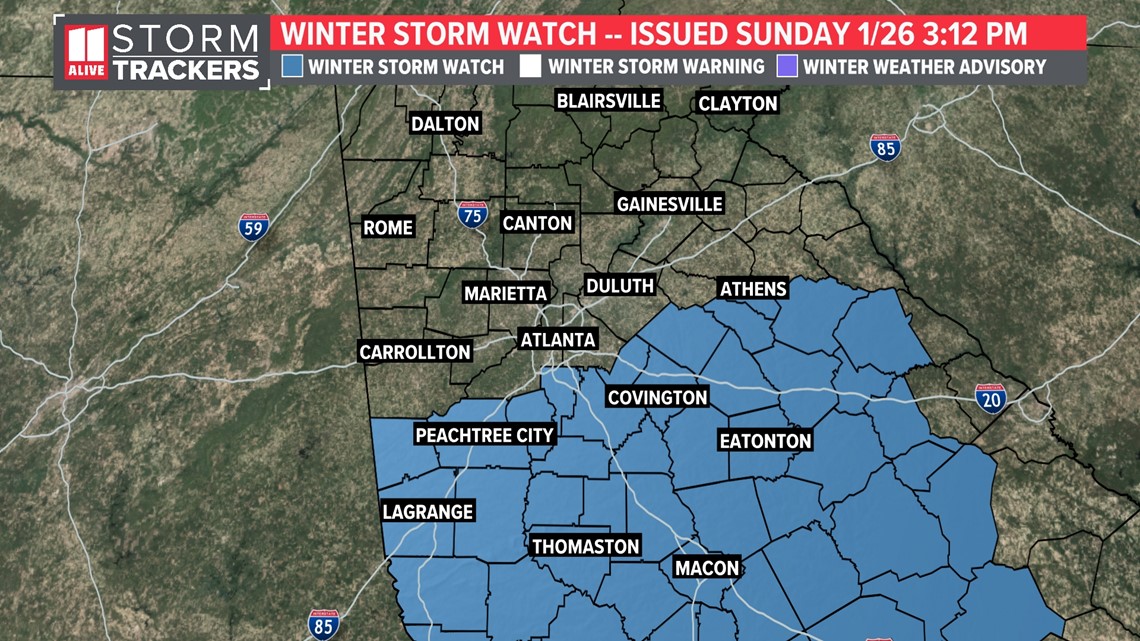
The next morning included metro Atlanta.
Winter Storm Watch extended to Atlanta on Jan. 27, 2014


As new information came in, the moisture nudged north.
With higher confidence of significant snow and sleet likely, they issued their first Winter Storm Warning for central Georgia and the southern metro area of Atlanta at 3:22 p.m. Monday afternoon.
Winter Storm Warning issued for central Georgia and south metro Atlanta on Jan. 27, 2014

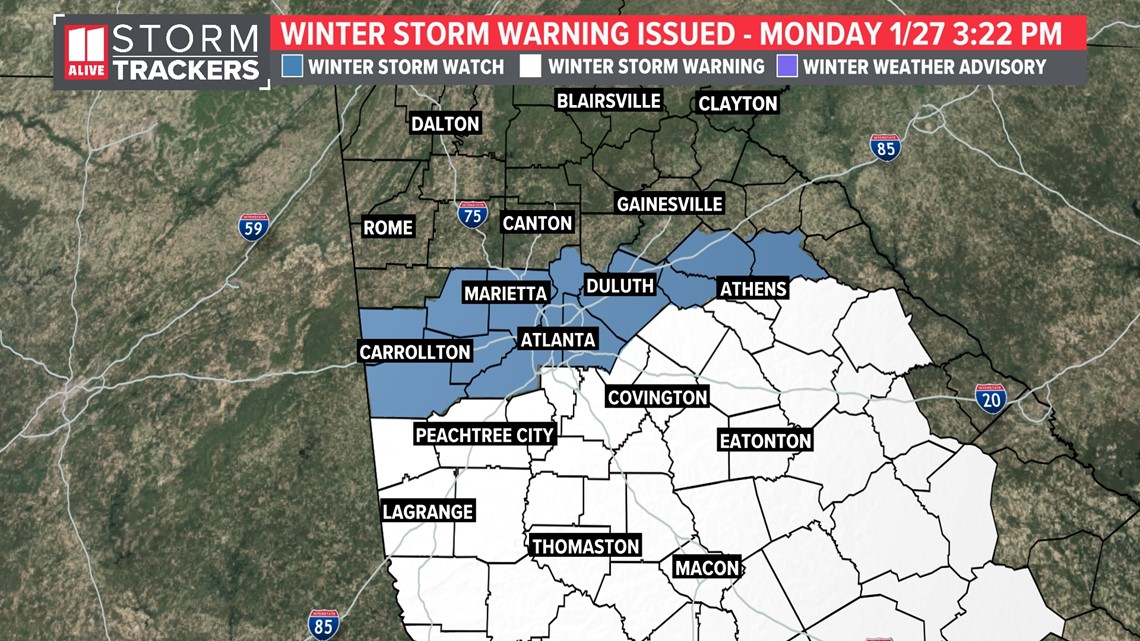
Then, later that evening, a Winter Weather Advisory was issued for Atlanta and the north side of the metro.
Chief Meteorologist Chris Holcomb remembers the reaction to that upgrade.
"Everybody was just waiting for that Winter Storm Warning to move northward up into the Atlanta area. But the night before, instead of a Winter Storm Warning, it was a Winter Weather Advisory," he said. "That is still an upgrade from a Winter Storm Watch, but I think a lot of people thought, well, it may not be as bad if it's not a Winter Storm Warning."


The next morning, the storm path nudged just a little further north again.
"At 3:39 in the morning, that's when it was upgraded to a Winter Storm Warning in the metro Atlanta area. And that's when everybody started taking things a little more seriously," Holcomb recalled.
That latest set of alerts also included a new Winter Weather Advisory for the rest of the north Georgia area except for the northwest corner.
Winter Weather Warning & Advisory expanded up to most of north Georgia in the early morning hours of Jan. 28, 2014

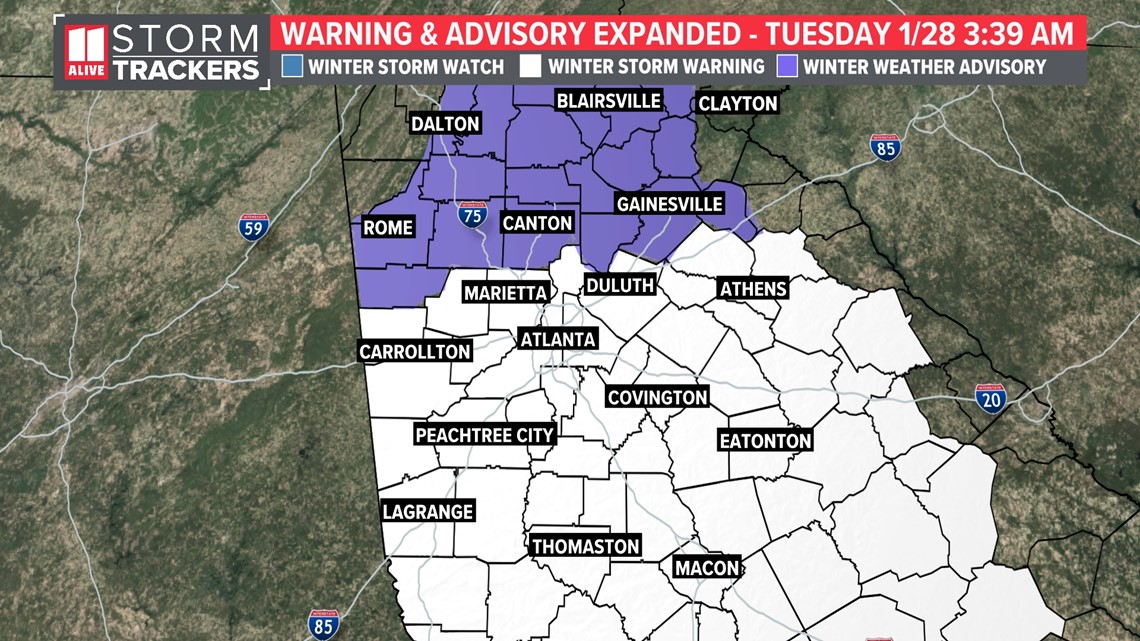
A Day the City Will Never Forget
At that early in the morning, the first flakes had yet to fall.
McNeil worked that morning and remembers stressing to 11Alive viewers while he was talking during the newscast how the snow would start to move in around mid-morning to midday. But without those flakes reaching the ground yet, he said many people made a choice that they would later regret.
"A lot of people woke up, looked outside, didn't see anything. Went to school, went to work like a regular day," he said.
But meteorologists knew it wouldn't be.
Holcomb left his house that morning -- earlier than normal -- and prepared to stay at the station.
"I told my wife and kids, 'Think of it like dad going on a business trip for a few days.'"
Like clockwork, the moisture started moving in.
As the snow started coming down, the National Weather Service ultimately ended up extending the Winter Weather Advisory just after 11 a.m.
Winter Weather Advisory expanded during the morning of Jan. 28, 2014


Then, as the snow nightmare transpired, I upgraded the entire area to a Winter Storm Warning just after 1 p.m.
All of metro Atlanta and north Georgia upgraded to a Winter Storm Warning shortly after 1 p.m. on Jan. 28, 2014

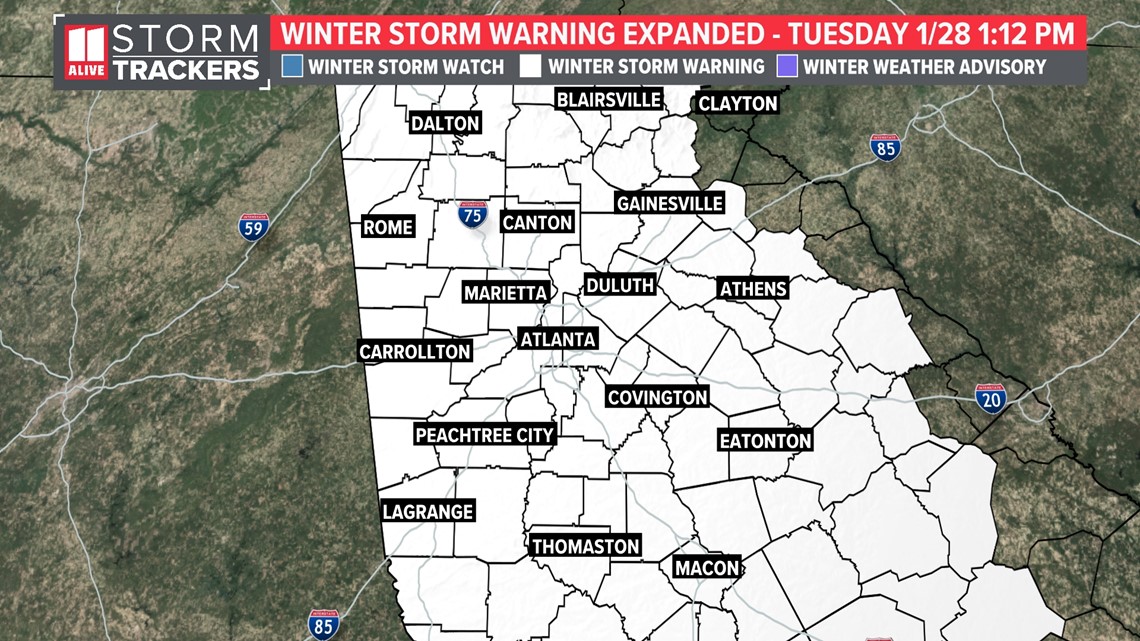
The city panicked, all at the same time.
"When they realized it was happening and tried to get home from work, that's when everybody got stuck," Holcomb said.


It wasn't necessarily solely the weather itself that caused the meltdown, but the culmination of everyone heading out the doors from their jobs and their schools at the exact same time to get home that created that perfect storm for utter disarray on the roads.
Snow Jam left over a million people on the roads in Atlanta, some for over 12 hours.
Unique Weather Setup
Part of what made this snow event so much different, is the cold temperatures we experienced during and after the snow.
Normally, when it snows in the South, the temperature is at or just above the freezing mark, 32 degrees. We get a "wet" snow -- with only six or seven inches of snow for every one inch of water equivalency.
This snow is like the consistency of a soft-serve ice cream. That wet snow stays slushy on the roads.
But this event was different. It snowed when it was much, much colder. Temperatures were in the mid-20s.
That snow ratio grew to 15 inches of snow for every one inch of water equivalency -- giving us a fluffy, powdery, "northern snow" -- with a consistency of baking soda.

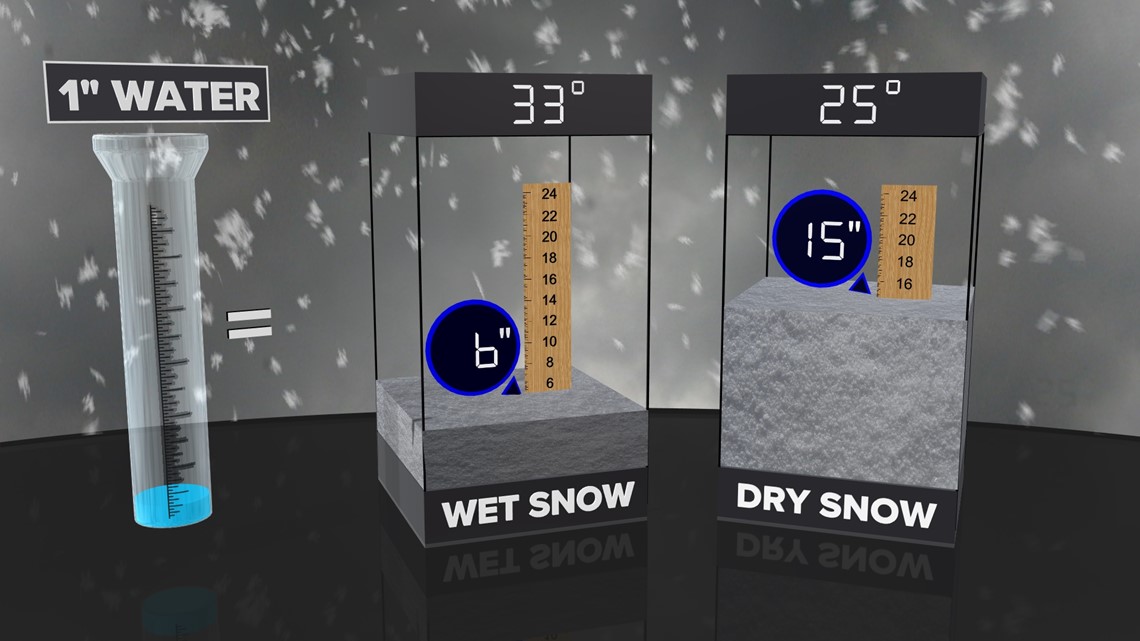
Snow compacted from cars on the roads. And the cold turned it into sheets of ice.
As millions were trapped on the roads, Atlanta fell down to 20 degrees before midnight. The next morning, it was just 12 degrees.

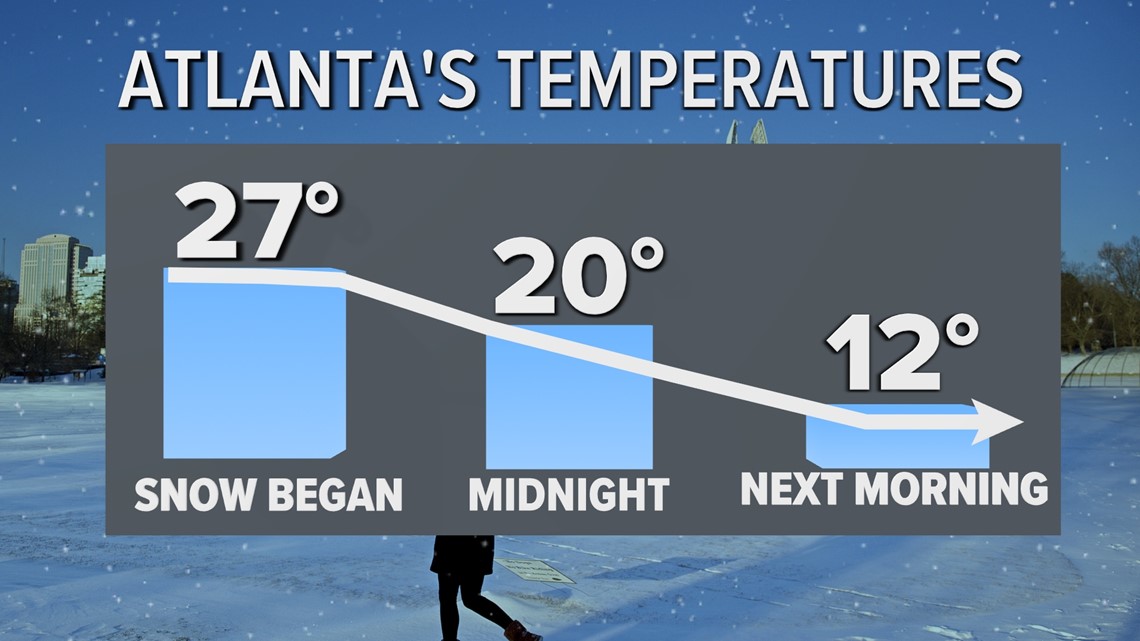
The Rarity of the Cold
Snow events that cold are a very, very rare thing here in Georgia. There have only been six occurrences in 93 years where it snowed with temperatures that cold in Atlanta.
Two of those happened on weekdays in the modern interstate era: Snow Jam 2014 AND the 1982 Snow Jam.
The Atlanta area was home to 1.7 million people in 1982 -- a third of its size in 2014.
In The Aftermath: What Unfolded
Out of the chaos came the necessity for change.
The Governor’s Task Force brought together meteorologists and representatives from GEMA, GDOT and school systems to initiate changes needed and improve communications.

